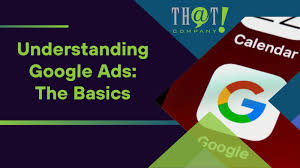There is no item in your cart
How Google Ads Works: A Comprehensive Guide

In today’s digital age, online advertising is crucial for businesses to reach their target audiences. Google Ads, formerly known as Google AdWords, is one of the most popular platforms for online advertising. With its expansive reach and robust tools, Google Ads enables businesses to connect with potential customers through targeted ads. Here’s a breakdown of how Google Ads works and why it’s essential to modern marketing strategies.
What is Google Ads?
Google Ads is an online advertising platform developed by Google. It operates on a pay-per-click (PPC) model, meaning advertisers pay each time a user clicks on their ad. These ads can appear on Google’s search results pages, partner websites, YouTube, and across the Google Display Network.
The Basics of Google Ads
- Campaign Setup:
- Advertisers create campaigns based on their business goals, such as driving website traffic, generating leads, or increasing sales.
- Campaigns are categorized into different types: Search, Display, Shopping, Video, and App campaigns.
- Keyword Targeting:
- For Search campaigns, advertisers select keywords relevant to their products or services.
- When users search for these keywords, the ads appear in the search results, often marked as “Sponsored” or “Ad.”
- Ad Auctions:
- Google Ads operates as an auction where advertisers bid on keywords.
- The position of an ad is determined by the bid amount and Quality Score, which measures the relevance and quality of the ad and its landing page.
- Ad Formats:
- Google Ads supports various ad formats, including text ads, image ads, video ads, and shopping ads. These formats ensure advertisers can reach their audience effectively across different platforms.
Key Features of Google Ads
- Targeting Options:
- Demographic targeting (age, gender, location).
- Behavioral targeting based on user interests and online activity.
- Remarketing to users who have previously interacted with the business.
- Budget Control:
- Advertisers set daily or monthly budgets to control ad spending.
- Flexible bidding strategies allow optimization for clicks, conversions, or impressions.
- Performance Tracking:
- Google Ads provides detailed analytics to monitor campaign performance.
- Metrics include click-through rates (CTR), conversion rates, cost per click (CPC), and return on investment (ROI).
How Businesses Benefit from Google Ads
- Increased Visibility:
- Google’s massive reach ensures businesses can appear in front of potential customers actively searching for their products or services.
- Cost-Effective Advertising:
- The PPC model ensures businesses only pay for actual engagement, making it a cost-efficient choice for marketing.
- Precise Targeting:
- Advanced targeting capabilities mean ads reach the most relevant audience, increasing the likelihood of conversions.
- Scalability:
- Google Ads is suitable for businesses of all sizes, from small startups to large enterprises. Campaigns can be scaled up or down based on business needs.
Tips for Success with Google Ads
- Conduct Thorough Keyword Research:
- Use tools like Google’s Keyword Planner to identify high-performing keywords relevant to your business.
- Craft Compelling Ad Copy:
- Write clear and engaging headlines and descriptions that resonate with your audience.
- Optimize Landing Pages:
- Ensure landing pages are relevant, fast-loading, and mobile-friendly to improve Quality Score and conversion rates.
- Monitor and Adjust Campaigns:
- Regularly review campaign performance and make data-driven adjustments to improve results.
Conclusion
Google Ads is a powerful advertising platform that provides businesses with the tools to connect with their audience effectively. By understanding its mechanics—from keyword selection to ad auctions—and leveraging its features, businesses can achieve their marketing objectives while maximizing their return on investment. Whether you’re a seasoned marketer or a business owner new to online advertising, Google Ads offers the flexibility and reach needed to succeed in today’s competitive landscape.


Leave A Comment